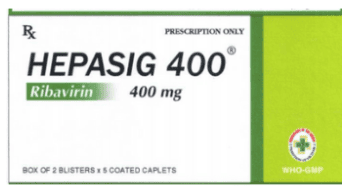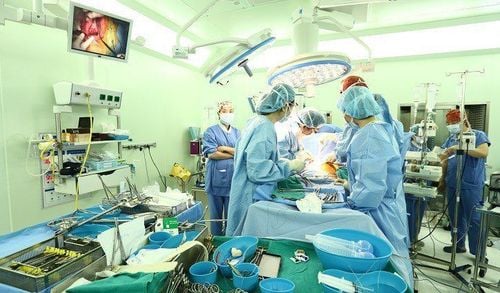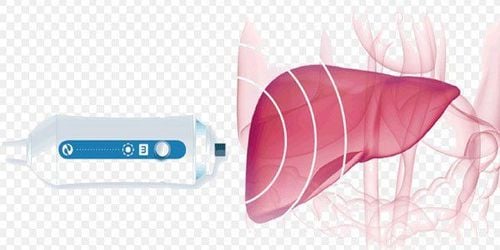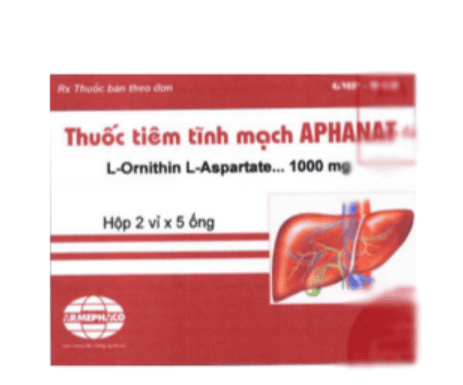This is an automatically translated article.
The article was professionally consulted by MSc Vu Van Quan - Department of General Surgery & Anesthesia - Vinmec Hai Phong International General Hospital.
Cirrhosis is a common disease in our country, the causes of the disease are quite diverse, but mostly due to alcohol and complications of viral hepatitis. Cirrhosis goes through stages: compensated cirrhosis and decompensated cirrhosis.
1. Compensated and decompensated cirrhosis
Compensated cirrhosis and decompensated cirrhosis describe the clinical status of a patient with cirrhosis. Compensated cirrhosis is an early stage of cirrhosis and decompensated cirrhosis is a late stage of cirrhosis.
A patient with no clinical evidence of cirrhosis is referred to as compensated cirrhosis. Conversely, a person with clinical evidence of cirrhosis is termed decompensated cirrhosis.
Differentiate between compensated cirrhosis and decompensated cirrhosis based on clinical, laboratory and imaging studies. For imaging, liver fibrosis is assessed by noninvasive means based on APRI, FIBROCAN, or biopsy. However, biopsies have many risks such as pain, bleeding, high cost, subjectivity of the reader, so they are rarely used in clinical practice.
Trắc nghiệm: Làm thế nào để bảo vệ lá gan khỏe mạnh?
Làm test trắc nghiệm kiểm tra hiểu biết về gan có thể giúp bạn nhận thức rõ vai trò quan trọng của gan, từ đó có các biện pháp bảo vệ gan để phòng ngừa bệnh tật.2. Compensated cirrhosis
Compensated cirrhosis is the first stage of cirrhosis. At this stage, the liver has been damaged but still performs many important functions of the body. The reason is that the part of the liver that has not been damaged can still make up for the damaged part of the liver.
At this stage, the symptoms are very poor, even the patient has no symptoms. The patient can still work normally, there are suggested symptoms such as:
Body fatigue Difficulty urinating There is mild pain in the right lower quadrant There is vascular star in the neck, chest The palm of the hand is large, the liver is firm, the spleen is enlarged. . Laboratory examination:
The portal vein may or may not be dilated, without ascites. Ultrasound: The liver and spleen may be enlarged, dense, or firm. Rough, irregular liver parenchyma may be non-banging, non-dilated. Biopsy has pictures: Necrosis and disappearance of diffuse hepatic lobules. Laparoscopy: Liver pale, may be slightly patchy. Enlarged or small volume of liver (enlargement or atrophy). Importantly, the progression of liver disease is not linear, it is progressive, so appropriate care is needed to slow or stop the progression of the disease.
Compensated cirrhosis is a stage where interventions can be made to improve liver function. If treated early, patients with compensated cirrhosis still have the opportunity to return to normal life. Therefore, patients should regularly go for health check-ups, diagnostic tests to detect disease early and take timely treatment measures.

Chán ăn và sụt cân là triệu chứng trong giai đoạn xơ gan còn bù
3. Decompensated cirrhosis
Is the final stage of cirrhosis , also known as cirrhosis ascites . The liver was damaged widely, the cirrhotic tissues at that time were almost completely fibrosis of the liver. Undamaged liver cells are no longer able to functionally compensate for damaged cells. When cirrhosis progresses to this stage, the manifestations are more pronounced.
Clinical symptoms show hepatocellular failure syndrome and portal hypertension syndrome, which will eventually lead to life-threatening complications.
The stage of decompensated cirrhosis is much more dangerous, the symptoms are more pronounced.
Patients with weak body, poor working ability, accompanied by symptoms such as bloating, flatulence, poor appetite. One of the legs or both legs is swollen, when pressed, it leaves an indentation for about 1-2 minutes before it disappears. The skin is initially discreetly yellow but then becomes more and more yellowish. Lips, tongue, eye mucosa pale. Bleeding gums, nosebleeds. Ascites phenomenon: The patient's abdomen is getting bigger and bigger, the abdominal skin is tight because the abdomen contains a lot of lemon yellow fluid. The blood vessels are clearly visible on the skin of the abdomen above the navel and on the sides of the ribs, when lying down, it is not clear but when sitting up, the blood vessels are more prominent. Spleen enlarged to several centimeters below the costal margin. Subclinical:
Portal vein dilatation and ascites. Ultrasound: Large or small liver size, rough liver parenchyma and many hyperechoic nodules. The surface of the liver is rough and rough, the portal vein is a few centimeters, sometimes there is a thrombus in the portal vein, there is fluid in the abdomen.

Một trong hai chân hoặc cả hai chân bị phù lên là các biểu hiện rõ rệt của Xơ gan mất bù
Patients who move to the stage of cirrhosis with decompensation, if treated early, will have a normal life, but the treatment process will face many difficulties, sometimes the disease leaves many dangerous complications, including have liver cancer. Therefore, hepatobiliary screening to detect disease at an early stage is the most effective measure to treat cirrhosis with high results.
Vinmec International General Hospital provides customers with a standard to advanced hepatobiliary screening package to help diagnose cirrhosis in particular and hepatobiliary diseases in general.
Vinmec is a prestigious and reliable address in the field of screening and treatment of hepatobiliary diseases, with the following outstanding advantages:
Vinmec is one of the few hospitals across the country applying elastic ultrasound liver tissue (also known as ARFI technique) to monitor liver disease, assess the degree of cirrhosis such as imaging, test kits from basic to advanced.
With the modern LOGIQ E9 ultrasound system, the powerful and flexible ultrasound imaging system meets a wide range of general examination needs. New technology using Shear Wave: This is a technology that allows qualitative and quantitative measurement of the elastic energy of the parenchyma through a color-coded table along with the value of elastic levels in Kpa pressure units.
A team of specialists with rich professional experience helps the treatment process to be highly effective, shortening the treatment time.
Professional and comprehensive examination and consultation service, civilized, polite, safe examination space, maximum sterilization.
From October 2019, Vinmec Hai Phong Hospital welcomes specialists in Gastroenterology - Liver, bile and pancreas from 108 Military Central Hospital to visit periodically for diseases of stomach, esophagus, colorectal, etc. liver, spleen, biliary tract, pancreas, anal fistula, rectal prolapse, gastrointestinal cancer screening, etc. At the request of the patient, Senior Doctor Le Van Thanh - Head of the Department of Hepatobiliary and Pancreatic Surgery – Military Central Hospital 108 will directly operate. Schedule on Saturday, surgery on Sunday so that customers can easily arrange their personal time and have more time to recover after the intervention.
Customers can directly go to Vinmec Health system nationwide to visit or contact the hotline here for support.














